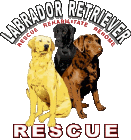Analysis of Lost Dog Behavior
by Kathy “Kat” Albrecht
Factors That Influence Distances Traveled
There are six major factors that influence the distances that lost dogs travel: temperament, circumstances, weather, terrain, appearance, and population density.
- Temperament of the dog. How a dog behaves toward strangers influences how far he will travel (when lost) before someone intervenes and rescues him. There are three primary behavioral categories into which lost dogs are classified:
- Gregarious dogs. Wiggly-butt, friendly dogs are more inclined to go directly up to the first person who calls them. Depending on the terrain and the population density where the dog was lost, these dogs will generally be found fairly close to home or will be picked up by someone close to the escape point. Gregarious dogs are often “adopted” by individuals (not shelter or rescue workers) who find them.
- Aloof dogs. Dogs with aloof temperaments are wary of strangers and will initially avoid human contact. They will be inclined to accept human contact, however, once they have overcome fear issues and become hungry enough. While aloof dogs can travel a great distance, they eventually can be enticed with food and patience, typically by experienced rescuers who know how to approach and capture a wary dog. These dogs are often recovered by rescue group volunteers, and their wariness can be easily misinterpreted as the result of abuse. In addition, these dogs are often not recovered for weeks or months after their escape, giving them the physical appearance (thinness, injuries, stickers, ticks, etc.) that they are homeless and unloved, and have been abused.
- Xenophobic (fearful) dogs. Xenophobia means “fear or hatred of things strange or foreign.” Dogs with xenophobic temperaments (due to genetics and/or puppyhood experiences) are more inclined to travel farther and are at a higher risk of being hit by cars. Due to their cowering, fearful behavior, people assume these dogs were abused, and even if the dog has ID tags, they will refuse to contact the dog.s people. Some of these panic-stricken dogs will even run from their own people! It may be necessary to use other dogs to get close enough to capture them or to use baited dog traps.
-
Circumstances surrounding the disappearance. A dog who digs out from a yard to explore a scent will tend to travel a short distance before she is found - meandering and doubling back as she explores the scent. On the other hand, a dog who bolts in panic because of fireworks or thunder will take off at a blind run and can run for several miles.
-
Weather. A dog who escapes on a beautiful spring day may travel farther than one who escapes in a snowstorm. Extreme weather conditions (snow, hail, rain, sweltering heat) will decrease the distances that lost dogs travel.
-
Terrain. A dog who escapes in a residential area will not travel as far as a dog who escapes in a mountainous area. Fences that create barriers will influence a dog’s travel, since a dog will tend to take the path of least resistance when traveling. Cactus, heavy brush, and steep cliffs can be barriers that influence whether a dog continues on a path or changes directions.
-
Appearance of the dog. What a dog looks like can influence how quickly he will be picked up by a rescuer. In general, most people are less inclined to pull over and attempt to grab a loose pit bull (a breed they often perceive as being aggressive) than they would a Labrador retriever (a breed they perceive as being friendly). Also, size matters: People are more inclined to pick up small dogs, since they look vulnerable and are easier to transport and house than large dogs. In addition, people are more likely to attempt to rescue a purebred dog, whom they perceive to have value, rather than a mixed-breed dog. When average motorists see a mixed-breed dog trotting down the sidewalk, their impression is often that the dog belongs in the neighborhood or that she is a homeless stray. But when those same people see a Boston terrier, they are inclined to believe that he must be a lost pet because he is a purebred dog.
- Population density. A dog who escapes in Manhattan will travel a shorter distance than a dog who escapes in the Rocky Mountains or in rural farmland. When dogs escape into areas with a high number of people, their chances of being found close to the escape point are increased. But in areas with an extremely low number of people, they tend to travel further and their chances of being found close to the escape point are decreased. A dog who escapes in the middle of the night will travel farther before being seen than a dog who escapes during rush-hour traffic.
Owner Behaviors That Create Problems
People often behave in ways that actually inhibit their chances of recovering their lost dogs. Some develop a “wait and see” approach (believing their dog will return home, like Lassie). By the time they start actively looking, those vital first few hours, during which they might have located the dog (or witnesses who saw the dog), are gone.
Others develop “tunnel vision” and fail to find their dog because they focus on the wrong theories. They might assume, for instance, that their dog was stolen and sold for research when, in fact, their dog may have been rescued and put up for adoption through a local adoption event. They experience “grief avoidance” and quickly give up the search because they really believe they will never see their dog again. They feel helpless and alone, often discouraged by others who rebuke them and tell them “It was just a dog” and “You’ll never find your dog.”
In addition, the level of human-animal bond (HAB) will influence the recovery efforts of a lost dog. People with a strong HAB will go to extremes to find their lost dog. They will tirelessly visit all the local shelters, post flyers, and contact rescue groups while maintaining a full-time job and other family commitments. On the other hand, people with a weak HAB will quickly become discouraged, assume they will never see their dog again, and will stop searching.
Rescuer Behaviors That Create Problems
People who find stray dogs often misinterpret the dog’s behavior: They assume that the cowering, fearful dog was abused when, in fact, the dog has a xenophobic temperament and has been shy and fearful since she was a puppy, due to genetics and puppyhood experiences. Dogs found in rural areas are often assumed to be “dumped” and homeless; many rescuers never think that this could be a dog who was lost. Some people who find a stray dog who does not have a collar automatically assume that the dog is homeless. They immediately work to place the dog rather than attempt to find the dog’s people. In addition, the first place where people search for their lost dog - the local shelter - is typically the last place where someone who finds a loose dog will take him (due to the fear of euthanasia)!
Kathy “Kat” Albrecht is a former police officer, field training officer, police detective, and K9 trainer turned pet detective. Her award winning memoirs “THE LOST PET CHRONICLES” details the unique story of how Kat switched her police search dogs from solving lost person investigations to solving lost pet investigations. In 2004, Albrecht founded Pet Hunters International, the first-ever pet detective academy that trains Missing Animal Response (MAR) Technicians in how to use behavioral analysis, search dogs, and law enforcement techniques to solve lost pet investigations. For more info, visit http://www.pethunters.com/.
Reprinted with permission





